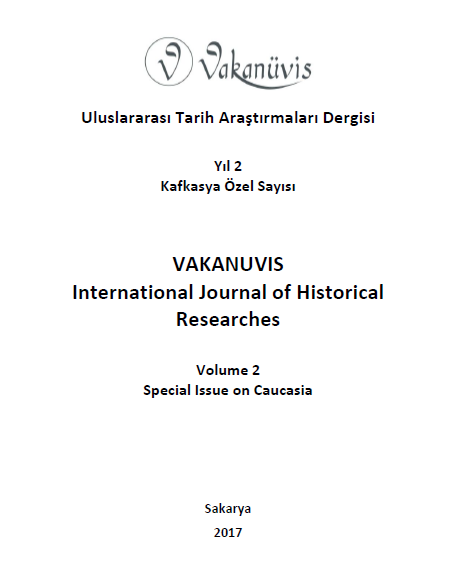Kafkasya’da Osmanlı Tahkîmatı: Sohum Kalesi (1723-1729)
Ottoman Fortification in Caucasus: The Sokhumi Castle (1723-1729)
Author(s): Cengiz FedakarSubject(s): Regional Geography, Military history, 18th Century, 19th Century, The Ottoman Empire
Published by: Serkan YAZICI
Keywords: Sokhumi Fortress; Abkhazian; Caucasus; Ottoman; Russia;
Summary/Abstract: Mehmet II conquered the region of Abkhazia with its center at Sochumi in 1454. For providing the security of the Eastern Black Sea trade, the Sochumi pier and the region, a four-tabed and three-door stone fortress was built over the ruins of an ancient Genoese fortress. The construction activities continued from 1723 until 1729. Workers were mostly supplied from Anatolia and Istanbul while the timber and stone needed for construction were brought from the vicinity of the fortress. The forts’ deposits, ammunition and military needs were met from Istanbul, Anatolia, Rumelia and Crimea. In the second half of the 18th century, due to the increasing Russian threat, the Sochumi fortress was further fortified along with the other fortress of the region. The Sochumi was invaded during Ottoman-Russian wars during the course of 18 th and 19 th century.Following the treaty of Bucharest, it remained in the Russian control unofficially, and, after the 1829 Treaty of Edirne, passed to the Russians oficially.
Journal: Vakanüvis- Uluslararası Tarih Araştırmaları Dergisi
- Issue Year: 2/2017
- Issue No: Spec.issue
- Page Range: 163-194
- Page Count: 32
- Language: Turkish

